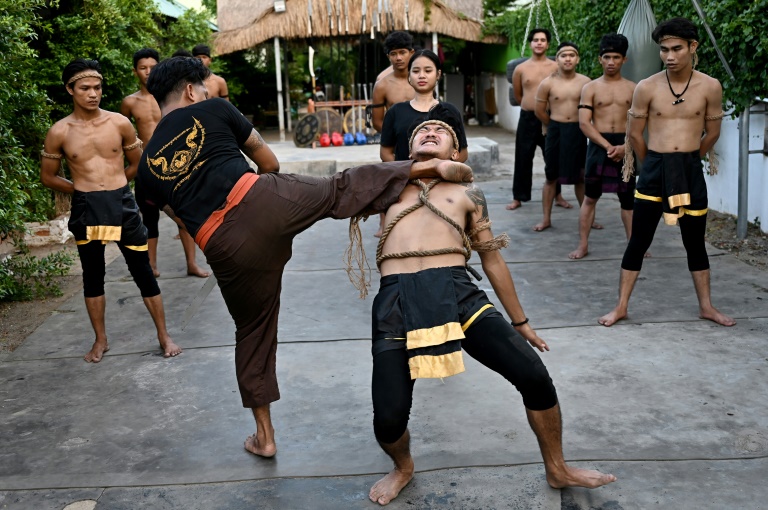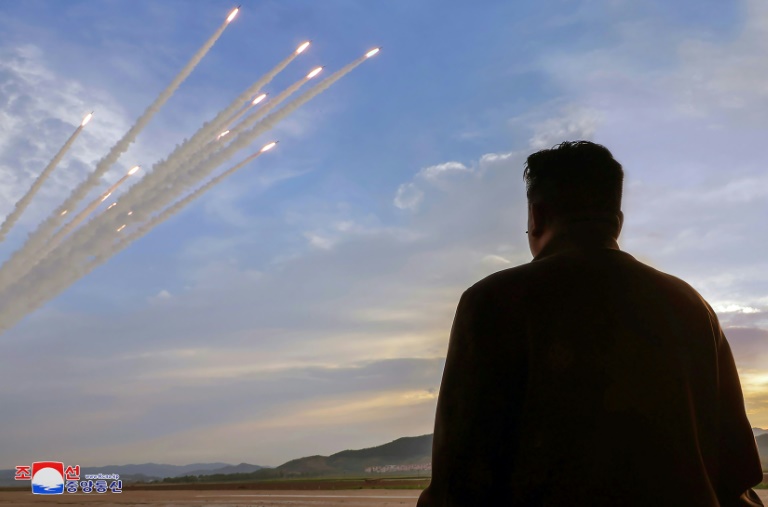In a small Cambodian town near the banks of the Mekong River, law student Oeun Bunthav tenses his slender torso and steels himself for an elbow strike to his head.
Bunthav is among 20 young Cambodians at an open-air club in Krong Areyksat training in the ancient Khmer combat martial art of Yutkromkhorm.
The practice was largely forgotten after many of its masters were killed in a purge of intellectuals under the communist Khmer Rouge between 1975 and 1979, but Bunthav and his fellow students are determined to learn its techniques and keep their heritage alive.
For the students, who wear headbands and arm ties, the training includes learning to launch knockout blows with fists, high-powered precision kicks and rapid elbow and knee strikes.
Stick, sword and spear fighting are also on the curriculum.
“I will try my best to train with it so that I can know about it clearly and try to preserve this martial art for the next generations,” Bunthav told AFP.
Yutkromkhorm — which translates to “the art of war” in the Khmer language — was born out of the numerous wars fought by the ancient Khmer empire.
It has three components — the art of war, magic spells and military strategy.
“In the ancient time, they did not have modern weapons like nowadays,” said Nak Rinda, the 25-year-old master who leads the classes in Krong Areyksat.
“In the ancient time people used this martial art such as punches, elbows, kicks, knees, swords, spears and arrows to protect our nation from invading enemies,” he added, explaining that the art’s techniques were refined and perfected by warriors over time.
In the early 2000s, some of the old Yutkromkhorm masters emerged from the shadows and began to showcase the little-known martial art.
It was introduced to the Cambodian military and some universities, but remained largely unknown to the public, who are more familiar with Kun Khmer kickboxing and another ancient martial art, Bokator.
“This ancient Khmer martial art, Yutkromkhorm, almost disappeared,” Rinda said.
“We lost a lot of human resources, especially intellectuals who died during the Khmer Rouge regime.
“Yutkromkhorm also suffered a great loss.
“But now our youths are trying to bring it back to show to all compatriots that we also have another ancient martial art, which is Yutkromkhorm.”
Student Mao Rida, 18, who has trained for around two years, hopes to use her skills to protect herself from “bad people”.
“At first I wanted to be trained with it for my self-protection because I am a girl, so that nobody could harm me,” Rida told AFP.
“Since I have learned that it is an old Khmer martial art, so I would like to be trained to be a good practitioner in order to help preserve this culture,” she said, appealing to young people, especially girls, to take it up.
“The elbow strike is brutal… It could injure a head,” she warned.
At the club, Bunthav’s opponent darts forward and in one swift, simultaneous movement, hops up and lands a ruthless mock strike.
Bunthav, who is in his third year of his legal studies, has been practising Yutkromkhorm for only two months, but the training has already helped to reduce his stress levels and made him healthier.
“What I love the most is the art of jumping and strike with an elbow,” he told AFP.
“If we are involved in a fight, this elbow strike is a deadly technique.”
AFP







